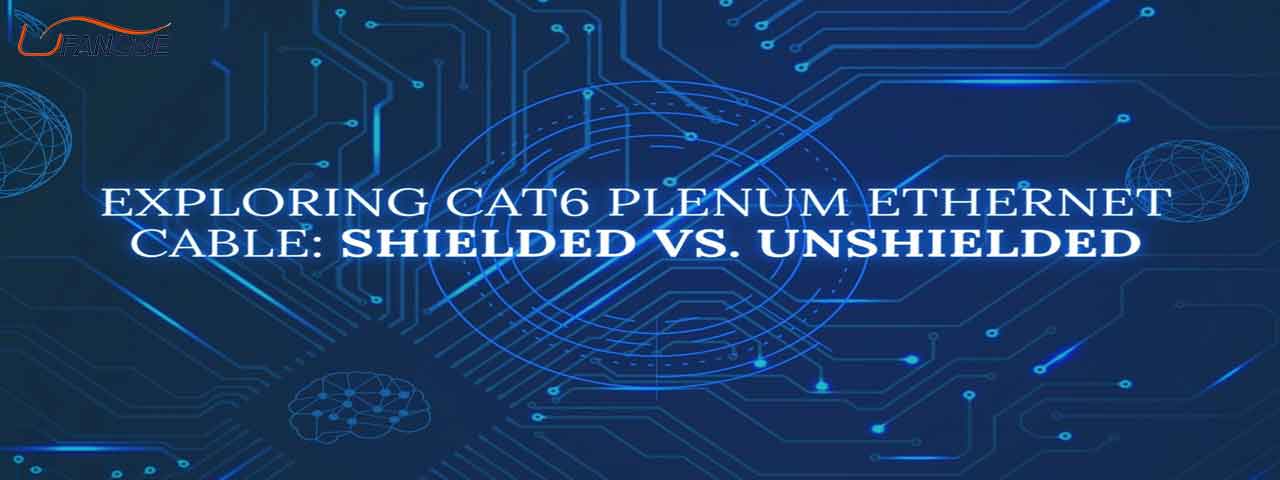Stay tuned
To learn more about the latest news of FANGBEI.
2024-05-06

Cat6 cables are high-speed Ethernet data transmission cables. You can find these cables in both shielded and unshielded varieties. The main difference between these two varieties is their resistance to EMI and crosstalk.
Shielded cables have an additional protective layer that helps reduce the impact of EMI and maintains the integrity of data transfer and performance speed. However, unshielded cables lack the shielding measure and are more susceptible to EMI. It is why these cables lack performance, especially in an environment with a higher interface.
These cables are different in many ways but which one to buy depends on your needs. Fangbei Cables is here with a detailed guide on a few essential factors to look at before deciding between shielded and unshielded cables.
Cat6 unshielded cable has 4 twisted pairs of 23 AWG unshielded conductors. These conductors are made from bare copper or copper-clad aluminum and can either be solid or stranded.
These cables are specifically designed to be used in networks with lower cable density, including your home or office.
An important thing about unshielded cables is that the number of cables running in parallel to them can cause interference or crosstalk.
Shielded Ethernet cables have a shield in three forms, including metal foil, wire mesh, or both wire mesh and metal foil. The job of shielding cables is to protect the cable conductor from receiving any unintended signals.
Shielded Cat6 cables resist interference and can be an optimal choice when many cables are running in parallel to each other.
Other than benefits, shielded cables have some drawbacks as well. First, their installation is a tricky process and second, they are expensive because of the additional features. Another drawback is that shielded cables are stiffer and harder to install.
Both shielded and unshielded Cat6 cables have the same core but the shielded cables have an extra layer of protection against interference. Although the only difference between both cables is the shield, it can have a distinct impact on the performance of both cables.
Let us have a detailed look at the similarities and differences between Cat6 shielded and unshielded cables.
Both shielded and unshielded cables have the following similarities:
Use similar Keystone Jacks and RJ45 8P8C connectors for termination
Have eight inner wires coded into four colors
Contain a rip cord to open the cable jacket
Terminated according to t568A or T568B standards
Run length distance is same in both cables
Shielded cables are a challenge to install because they are heavier and thicker
Shielded cables are expensive
Expensive shielded connecting hardware is required for shielded cables
Shielded cables have undesirable ground loops
Contains a dedicated ESD (Electrostatic Discharge) to drain off static electricity
When you are selecting between shielded and unshielded cables, you must consider important factors like lifespan, cable density, and budget. These factors help you determine the best Ethernet cable for your specific network environment.
Shielded cables prevent EMI (electromagnetic interference) and radio-frequency (RFI) from impacting their performance. The shielding on these cables helps increase their lifespan by offering protection against external signal interference and crosstalk.
Unshielded cables have a shorter lifespan as compared to shielded cables because they are vulnerable to EMI and RFI. Moreover, their lifespan decreases, especially in high-density cabling environments.
High-density cable environments can cause interference in the signals and degrade the performance of the plenum cables. In such an environment, working with shielded cables is an efficient choice, as they prevent signal interference between two adjusted cables.
As compared to shielded cables, working with unshielded cables in a high-density environment is never an efficient choice because they might experience crosstalk and signal degradation. It can result in reduced data transmission speed and network downtime.
While selecting between shielded and unshielded cables, you must consider the price difference between both cables. Shielded Cat6a cables are usually more expensive as compared to unshielded cables due to the additional shielding material used. However, because of the added protection, shielded cables result in lower maintenance costs and have a longer life span.
In conclusion, shielded cables have better performance and they don’t get affected by EMI and RFI. Unshielded cables, on the other hand, provide more cost-effective and flexible solutions for home and office networks where the use of EMI is minimal to none.
Selecting among both cables mainly depends on specific performance requirements and environmental conditions. Whatever decision you make, you must trust the best Ethernet cable providers, like Fangbei Cables, so that you can get reliable, affordable, and premium quality internet cables.
Fangbei, a premier manufacturer specializing in network connectors, terminals, electronic components, and cutting-edge network tools.

+86 769 8127 1686 +86 186 8105 2977
186 8105 2977